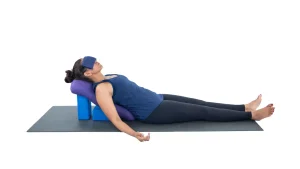
Let’s be honest. The sound of a dental drill can send a shiver down anyone’s spine. It’s often paired with that lingering numbness and the feeling that, well, a lot of your tooth is now just… gone.
But what if there was another way? A dental philosophy that treats your teeth not as slabs of marble to be carved, but as living, dynamic structures to be preserved? That’s the heart of minimal intervention dentistry, or MID. It’s a shift from a “drill and fill” mindset to a “prevent and preserve” partnership.
What is Minimal Intervention Dentistry, Really?
At its core, MID is a philosophy. It’s the dental equivalent of fixing a small leak in your roof before the whole ceiling caves in. The goal is to remove as little healthy tooth structure as possible while still effectively stopping disease and restoring function.
Think of your tooth enamel as the strong, outer wall of a fortress. Traditional dentistry might involve knocking down a large section of the wall to evict a small invader (decay). MID, on the other hand, finds the smallest possible door to sneak in, deal with the problem, and reinforce the wall from the inside. It’s precision work. It’s thoughtful. And it changes everything.
The Core Principles: The MID Mindset
This approach isn’t just one technique; it’s a whole new way of thinking built on a few key pillars.
1. The First Step is Always Prevention
This is non-negotiable. MID prioritizes stopping problems before they even begin. It’s about identifying your individual risk factors—diet, oral hygiene habits, genetics, even the bacteria in your mouth—and creating a personalized plan to manage them. It’s proactive, not reactive.
2. Early Detection is Everything
MID relies on catching issues in their earliest, most manageable stages. We’re talking about a tiny spot of demineralization (the very first sign of a cavity) that can often be reversed, not a gaping hole that needs a large filling. This means using advanced diagnostic tools that see what the naked eye can’t.
3. Preserve Tooth Structure at All Costs
Every milligram of healthy enamel and dentin is precious. Once it’s drilled away, it’s gone for good. MID techniques are designed to be ultra-conservative, removing only the diseased tissue and leaving the healthy structure intact. This makes the tooth stronger and more resilient in the long run.
The MID Toolkit: Modern Techniques for a Gentle Touch
So, how is this actually done? Well, forget the one-size-fits-all drill. Here are some of the star players in the MID toolkit.
Air Abrasion
Imagine a miniature sandblaster that uses a precise stream of air and tiny abrasive particles to gently “erase” early decay. It’s often drill-free, vibration-free, and usually requires no anesthetic. It feels… different. A little gritty, but not unpleasant.
Silver Diamine Fluoride (SDF)
This one is a game-changer, especially for kids, anxious patients, or those with special needs. SDF is a liquid that is brushed onto a cavitated spot. It effectively stops the decay in its tracks by killing the bacteria and hardening the tooth structure. The main drawback? It permanently stains the decayed area black. But for halting decay without any drilling at all, it’s a powerful option.
Hall Technique for Crowns
This clever technique for baby teeth involves cementing a pre-formed metal crown over a decayed molar without any drilling or local anesthetic. It sounds counterintuitive, but it works by sealing the decay off from its food source, effectively starving the bacteria and protecting the tooth until it’s ready to fall out naturally.
Biomimetic Dentistry
This takes MID to an art form. “Biomimetic” means to mimic life. These restorations (fillings, onlays) are bonded to the tooth in a way that replicates the natural strength and flexibility of your original tooth. The result is a restoration that works in harmony with the tooth, reducing the risk of fractures and future re-treatment.
Why Your Tooth’s Structure Matters More Than You Think
You might wonder, “What’s the big deal if they drill a little more?” Well, it’s a huge deal. A traditional filling weakens the overall tooth structure. It’s like cutting a notch into a piece of wood—it becomes the most likely spot to crack under pressure.
This can start a destructive cycle: a small filling leads to a larger one, which may then lead to the need for a crown, and eventually, perhaps, a root canal or even extraction. MID aims to break this cycle before it even begins. Preserving the natural tooth is the ultimate goal, because honestly, nothing artificial is ever as good as the original.
Is MID Right for You? The Patient’s Role
Minimal intervention dentistry is a two-way street. It’s a partnership. Your dentist brings the expertise and technology, but you bring the daily commitment. The success of this approach hinges on your active participation in prevention.
This means embracing your personalized care plan, which might include:
- Using high-fluoride toothpaste.
- Improving your diet and reducing sugar frequency.
- Perfecting your brushing and flossing technique.
- Attending regular, proactive check-ups and cleanings.
If you’re willing to be an active player in your oral health, then MID is absolutely for you. It’s for anyone who wants to keep their natural teeth for a lifetime.
A Different Kind of Dental Visit
The atmosphere in a practice dedicated to MID feels different. There’s less anxiety in the air. The conversation shifts from “What do we need to fix?” to “How do we keep you healthy?” It’s collaborative. You’ll likely spend more time talking with your hygienist and dentist about your habits and goals.
Diagnostics become more detailed, too. You might encounter:
| Diagnostic Tool | What It Does |
| DIAGNOdent | A laser fluorescence device that finds hidden decay with incredible accuracy, long before it’s visible on an X-ray. |
| ICam | A tiny, wireless intraoral camera that lets you see exactly what your dentist sees, turning your mouth into a high-definition movie screen. |
| Digital Impressions | No more goopy, gag-inducing impression material. A small scanner creates a perfect 3D digital model of your teeth. |
These tools empower both you and your dentist to make the best, most informed decisions together.
The Future of Dentistry is Minimal
The shift towards minimal intervention dentistry isn’t just a trend; it’s the future. It’s a more ethical, sustainable, and patient-friendly way to practice. It recognizes that a tooth is more than just a hard object—it’s a complex, biological part of you.
So the next time you sit in the dental chair, remember that you have a choice. You can seek out a dentist who sees their role as a partner in preservation. It’s a quieter, kinder, and frankly, a smarter way to care for your smile. Because the best dental work, in the end, is the one you never needed in the first place.







